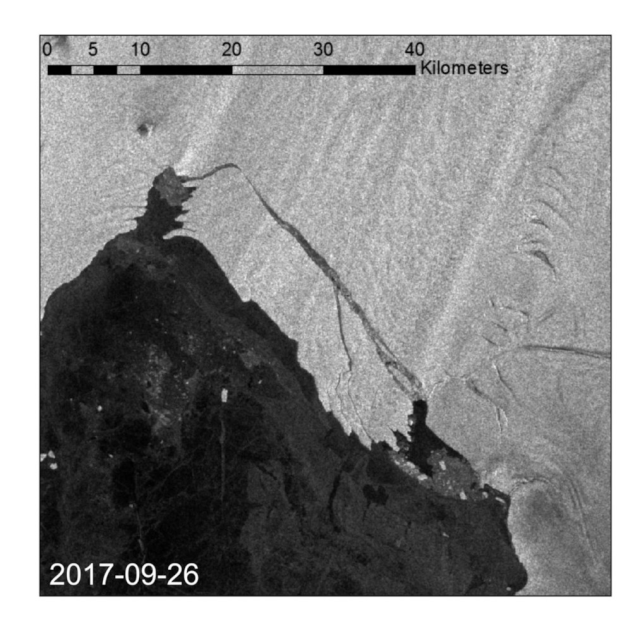Environment & Energy
Related: About this forum103-Square Mile Berg Disintegrates Less Than 2 Months After Calving From Pine Island Glacier
The stability of a key Antarctic glacier appears to have taken a turn for the worse as a large iceberg that broke off during September has swiftly shattered. Meanwhile, scientists are concerned that the rate of sea level rise could further accelerate in a world forced to rapidly warm by human fossil fuel burning.
 ?w=600&h=584
?w=600&h=584
(Iceberg drifting away from the Pine Island Glacier rapidly shatters. Image source: European Space Agency.)
This week, a large iceberg that recently calved from West Antarctica’s Pine Island Glacier rapidly and unexpectedly disintegrated as it drifted away from the frozen continent. The iceberg, which covers 103 square miles, was predicted to drift out into the Southern Ocean before breaking up. But just a little more than two months after calving in September, the massive chunk of ice is already falling apart.
The break-off and disintegration of this large berg has caused Pine Island Glacier’s ice front to significantly retreat. From 1947 up until about 2015, the glacier’s leading edge had remained relatively stable despite significant thinning as warmer water began to cut beneath it. But since 2015, this key West Antarctic glacier has begun to rapidly withdraw. And it now dumps 45 billion tons of ice into the world ocean each year.
EDIT
The present rate of melt is enough to raise sea levels by around 1 millimeter per year. That’s not too alarming. But there’s concern that Pine Island Glacier will speed up, dump more ice into the ocean and lift seas by a faster and faster rate.
Pine Island Glacier and its sister glacier Thwaites together contain enough water to raise seas by around 3-7 feet. The glacier sits on a reverse slope that allows more water to flood inland, exposing higher and less stable ice cliffs as the glacier melts inland. If the glacier melts too far back and the ice cliffs grow too high, they could rapidly collapse — spilling a very large volume of ice into the ocean over a rather brief period of time. As a result, scientists are very concerned that Pine Island could swiftly destabilize and push the world’s oceans significantly higher during the coming years and decades.
Link to tweet
EDIT
https://robertscribbler.com/2017/12/04/gigantic-iceberg-disintegrates-as-concern-grows-over-glacier-stability-sea-level-rise/
Pachamama
(16,887 posts)And here we are with a President helping it along and all his climate denier supporters....
defacto7
(13,485 posts)ice mass behind the ice berg in these time-lapse photos?